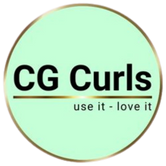De LOG Methode voor krullend haar
Jan 26, 2024
DE LOG-METHODE: DE ROUTINE DIE ELKE KRULLENBOL MOET WETEN VOOR GEHYDRATEERDE KRULLEN
Je hebt van die poreuze, opgerolde haarlokken. Je hebt elke chemische behandeling en stylingmethode geprobeerd om ze er presentabel en beheersbaar uit te laten zien. De strijd is hier en dat weten we.
Daarom bieden we je deze keer de perfecte haarverzorgingsroutine die je niet alleen helpt je haar te herstellen met intense hydratatie, maar het ook glanzend en pluisvrij maakt. Hier lees je alles om je krullen te transformeren in absoluut veerkrachtige, glanzende en zachte krullen.
Wat is de LOG methode?
LOG is een stylingmethode die je helpt meer gedefinieerde krullen te verkrijgen en deze tegelijkertijd beheersbaar te maken.
LOG is een methode die zorgvuldig vocht in lagen legt om het diep in je haar vast te houden. Bij deze methode wordt je gevraagd de producten in deze volgorde in lagen aan te brengen:
Leave-in conditioner (L), Oil (O) en Gel (G).
Maar je vraagt je misschien af: hoe verschilt dit van de andere manieren om ons haar te wassen en te stylen? Onze normale manier om haren te wassen kan het vocht verwijderen. Maar met de LOG-methode proberen we vocht naar onze haarlokken te laten stromen. Dit is ook de reden waarom de LOG-methode je haar handelbaarder en glanzender maakt.
Als je van de LOG-methode hebt gehoord, dan heb je vast ook van de LOC-methode gehoord.
Het verschil is alleen dat je in de laatste stap crème gebruikt in plaats van een gel. Een crème is een haalbare optie voor mensen met zeer poreus haar en snel uitdrogend. De crème helpt je meer vocht toe te voegen om de krullen pluisvrij te maken. Aan de andere kant helpt de gel je krullen te definiëren en het vocht vast te houden dat je in de vorige stappen hebt toegevoegd. Beide methoden zijn goed en het hangt van je haartype af om te begrijpen welke methode je moet volgen voor beter handelbaar haar.
HOE KUN JIJ JE HAARTYPE BEGRIJPEN VOORDAT JE VOOR DE LOG-METHODE KIEST?
Je genen en omgeving hebben invloed op het haartype. Afhankelijk van het type haar, kunt je ervoor kiezen om een nazorgmethode te kiezen.
LOG is over het algemeen geschikt voor zeer poreus en opgerold haar. Afhankelijk van de textuur van het haar, worden ze gedefinieerd in 4 categorieën en later onderverdeeld in subcategorieën - A, B en C volgens de porositeit, dichtheid, krulpatroon, enz.
Laten we eens kijken naar deze typen en ook welk haartype de LOG-methode moet gebruiken.
TYPE 1
Dit zijn over het algemeen steil haar met weinig tot geen krullen. Zelfs als ze krullen, kan het die kleine ‘S’ ergens bij de slaap of rond de nek zijn. Dit haar is niet snel beschadigd en gaat over het algemeen gepaard met olieachtig haar, aangezien het talg van de hoofdhuid zich gemakkelijk tot het einde verspreidt. Door de bestendigheid tegen beschadigingen zijn ze meestal niet zo poreus als je ze goed onderhoudt. Ze worden geclassificeerd als A, B en C, afhankelijk van de hoeveelheid ‘S’-golven en het volume.
Type 1A: Steil haar
Type 1B: Steil, volumineus haar
Type 1C: Steil haar met een paar ‘S’ rond de nek of slaap
Dit haartype is beheersbaar en heeft daarom geen LOG-methode nodig.
TYPE 2
Type 2-haar kan een mix van steil en golvend haar hebben. Dit haartype kan soms pluizig zijn in vergelijking met type 1-haar. Ze kunnen golvend zijn en makkelijk krullen. Type 2-haar kan verder als volgt worden geclassificeerd:
Type 2A: Lang, uitgerekt golvend haar
Type 2B: Relatief korter golvend haar
Type 2C: Definieert golven met een paar krullen
Dit haartype is veelal beheersbaar. Poreus haar kan baat hebben bij de LOG-methode.
TYPE 3
Dit is krullend haar, maar het zijn geen dichte, strakke krullen. Ze kunnen een ‘S’- of ‘Z’-vorm hebben, afhankelijk van de strakheid van de krullen. Ze zijn gevoelig voor beschadiging en kunnen ook pluizend zijn. Mensen met dit haartype hebben over het algemeen moeite met het beheersen van hun haar door de verandering van het weer. Ze kunnen verder worden geclassificeerd als-
Type 3A: losse, grote krullen
Type 3B: veerkrachtige medium krullen
Type 3C: Kleine en strakke krullen
Dit haartype heeft baat bij de LOG Methode.
Afhankelijk van de porositeit van het haar kan men de frequentie van LOG bepalen. Eén manier om de porositeit van je haar te bepalen is door een glas water te vullen en een schone haarlok erin te laten vallen. Als het zinkt, is het zeer poreus en verliest het gemakkelijk vocht. Als het op het wateroppervlak blijft, heeft het een lage porositeit. Zeer poreuze lokken hebben van nature meer vocht nodig om gevoed te blijven. Dit is waar de LOG-methode helpt.
TYPE 4
Dit zijn strak opgerolde krullen. Hoewel ze er misschien volumineus uitzien, krimpen ze na het wassen omdat ze minder lagen haarschubben hebben. Hierdoor zijn ze extreem gevoelig voor beschadiging. Over het algemeen zijn het ‘Z’-vormige krullen. Ze zijn doorgaans poreus en hebben daarom meer vocht nodig. Ze kunnen verder worden geclassificeerd als-
Type 4A: ‘S’-vormige strakke krullen
Type 4B: ‘Z’-vormige strakke krullen
Type 4C: ‘Z’-vormige, losjes gedefinieerde krullen
Ze hebben wel baat bij de LOG Methode, omdat ze gemakkelijk vocht kunnen verliezen. Om de krullen te beschermen, moeten ze een beschermende barrière hebben die het verlies van vocht voorkomt om de krullen te definiëren.
Ter afsluiting van dit gedeelte zouden we willen zeggen dat iedereen met haartype 2,3 en 4, zeer poreus haar, baat heeft bij de LOG methode.
HOE PAS JE DE LOG / LOC METHODE TOE?
Het is precies zoals het klinkt. Het omvat drie stappen direct na het wassen van je haar. Wat je nodig hebt is een leave-in conditioner, olie en gel. Laten we hiermee beginnen!
STAP 1: LEAVE-IN CONDITIONER
Dit is de stap na het wassen en conditioneren van je haar. Terwijl je haar nog nat is, pak je een leave-in conditioner. Verdeel je haar voordat je het product op je lokken aanbrengt, voor een gelijkmatige verdeling. De hoeveelheid van het product is afhankelijk van de porositeit en dichtheid van je haar. Als je dun en poreus haar hebt, kan het gebruik van veel producten je haar verzwaren. Breng dus de hoeveelheid aan volgens de behoefte van uw haar. Kam het met een brede kam om het product verder over de lengte van je haar te verdelen.
STAP 2: OLIE
Als je direct daarna olie gebruikt, kun je een laagje vocht op je haar aanbrengen. Met deze stap kun je water en een leave-in-conditioner verzegelen. Gebruik hiervoor een sealende olie zoals:
- Onze Super Sealing Oil
- (Jamaican black) castorolie:
- Druivenpitolie:
- Jojoba-olie:
- Rijstolie:
- Amandelolie:
- Argan olie (zowel sealend als hydraterend)
STAP 3: GEL
Dit is de laatste stap die je niet alleen helpt al het goede van de voorgaande stappen vast te houden, maar ook de krullen echt definieert. Het is de bedoeling dat de gel opnieuw over de hele lengte wordt aangebracht. Na het aanbrengen van de gel mag jij je haar niet kammen. Laat de gel settelen en fixeer je krullen. Je haar kan knapperig aanvoelen zodra je krullen gedroogd zijn. Dit is normaal. Je kunt deze hardheid (cast) eruit knijpen en voila, daar zijn je perfect glanzende en gedefinieerde krullen!
Optie: Geef je haar na elke stap een minuut massage, zodat het de goedheid van elk product kan absorberen. Na het gebruik van gel, moet je het goed laten rusten als je het gaat drogen. Dit proces kan 15-20 minuten extra duren, maar wij denken dat dit volkomen redelijk is gezien de resultaten die het oplevert.
WAT ZIJN DE FACTOREN WAAR JE AAN MOET DENKEN VOORDAT JE DE LOG-METHODE GEBRUIKT?
Hoewel de LOG-methode geweldig is voor krullend haar, moet je rekening houden met bepaalde factoren die tot ongewenste resultaten kunnen leiden. Hier is iets dat je in gedachten moet houden vóór de LOG-methode:
- WATERKWALITEIT
Hard water laat een negatieve lading achter op je haarlokken, waardoor ze pluizig, hard, ruw en broos worden. Niets van dit alles is mooi, vooral niet voor krullend haar. LOG introduceert drie producten voor je haar om het te verzachten, maar door resten van mineralen uit hard water neemt het haar deze producten niet op. Hierdoor krijg je vettig en ruw haar. Zorg er dus voor dat je een haarverzachtende shampoo en conditioner gebruikt voor het geval je met hard water moet werken.
- JE HAAR VERDELEN IN SECTIES
Dit is zo belangrijk in de LOG-methode. Het is omdat het product elke streng moet bereiken om je haar handelbaar te maken, anders blijf je achter met delen van je haar die nog steeds pluizig en ruw zijn. Door te werken met secties tijdens het uitvoeren van de LOG-methode wordt een gelijkmatige distributie van het product mogelijk.
- KAMMEN MET EEN BREDE BORSTEL
Met de LOG-methode kun je nat haar borstelen, wat over het algemeen in strijd is met de klassieke norm die zegt dat het kammen van nat haar tot meer haaruitval kan leiden. Door te kammen tijdens de LOG-methode kan het product zich gelijkmatig over je krullen verspreiden, maar je moet ervoor zorgen dat ze niet wreed zijn voor je krullen. Gebruik een kam met wijde tanden of een borstel met zachte pinnen en borstel met zachte bewegingen door je natte/vochtige haar.
Hoe belangrijk het ook is om je haar te borstelen tijdens de LOG-methode, het is net zo belangrijk om voorzichtig te zijn bij het gebruik van een kam op nat/vochtig haar.
- DE JUISTE HOEVEELHEID GEBRUIKEN
Afhankelijk van de porositeit, dichtheid en strakheid van de krullen, kun je beslissen welke hoeveelheid product je moet aanbrengen. Als je te veel van het product aanbrengt, kan het haar verzwaren en er vettig uitzien. Begin met minder product en voeg meer toe als je denkt dat het moet.
HOE VAAK KAN JE DE LOG-METHODE DOEN?
Als je zeer poreus haar hebt, kun je in het ideale geval elke wasdag de LOG-methode gebruiken, maar als je haar gemiddeld tot minder poreus is, kunnen je krullen een afwisselende wasdag gebruiken. De LOG-methode is vooral bedoeld om vocht in je krullen te brengen, zodat ze gezond en handelbaar worden. Het is aan jou om de frequentie te bepalen, afhankelijk van hoe gemakkelijk je haar vocht verliest.
WELKE PRODUCTEN ZIJN GESCHIKT VOOR DE LOC METHODE?
Sealende olieen zijn het beste om te gebruiken in deze methode, want het woord zegt het al. Niet alle olieen zijn geschikt omdat je penetrerende olien hebt en die zorgen niet voor een sealend laagje om je haren..
HET KOMT HIER OP NEER...
LOG is een methode om je krullen te hydrateren en te definiëren in drie stappen na het wassen: Leave-in conditioner, olie en gel.
Het is geweldig voor haartypes 3 en 4 die zeer poreus haar kunnen hebben. Poreus haar heeft de neiging snel vocht te verliezen en LOG is de oplossing die vocht in laagjes introduceert om het langer vast te houden. Als je krullend haar hebt, moet je de LOG-methode 3-4 pogingen geven voor handelbare en glanzende krullen!


